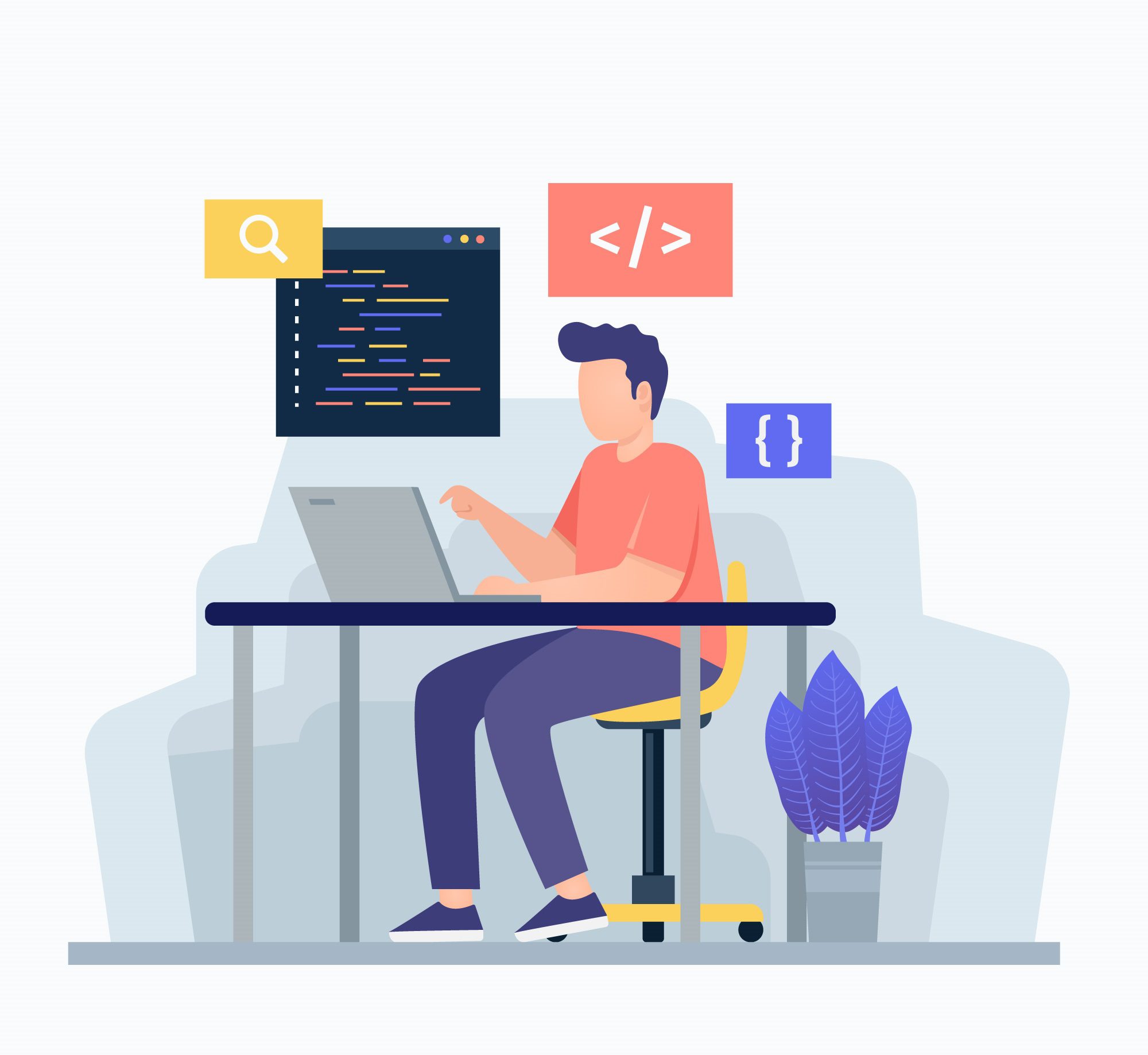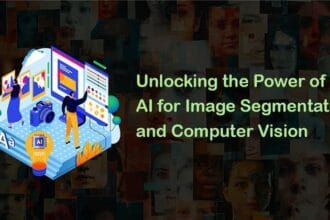
In today’s fast-paced tech world, the role of a full-stack developer is more important than ever. Full-stack developers are versatile professionals who can work on both the front-end and back-end of web applications. They can build a complete, functional, and visually appealing website from start to finish. If you’re aspiring to become a full-stack developer in 2024, there are a few key skills you need to master.
Who is a Full Stack Developer and What Do They Do?
A full-stack developer is a tech expert who can work on all aspects of a web application, from the parts you see and interact with to the parts that run behind the scenes. They are like the superheroes of the web development world, equipped with many skills to build complete, functional websites and applications.
Front-End Development: Making Things Look Good
The front end is what you see when you visit a website—the layout, design, colors, buttons, and images. Full-stack developers use languages like HTML, CSS, and JavaScript to create and style these elements. They ensure that the website looks great and works smoothly on all devices, whether you’re on a computer, tablet, or smartphone. They also use frameworks like React, Angular, or Vue.js to build dynamic and interactive user interfaces.
Back-End Development: Making Things Work
The back end is the behind-the-scenes part of a website you don’t see. It’s where data is stored, processed, and managed. Full-stack developers use server-side languages like Node.js, Python, Ruby, or PHP to build the server, manage the database, and write the application logic. They ensure that the server, application, and database communicate effectively, handling everything from user authentication to data retrieval.
Bridging the Gap: Connecting Front-End and Back-End
Full-stack developers are unique in their ability to work on both the front end and back end. This means they understand how the entire web application works and can ensure that all system parts are well-integrated. They can switch between designing user interfaces and writing server-side code, making them incredibly versatile and valuable.
The Full Package: What Do They Do?
Full-stack developers are responsible for:
- Designing and building user-friendly interfaces.
- Writing server-side code to manage application logic and databases.
- Ensuring smooth communication between the server, application, and database.
- Debugging and optimizing the application for better performance.
- Collaborating with other developers, designers, and stakeholders to bring a project to life.
What are the crucial Full Stack Developer skills?
Becoming a full-stack developer means mastering a variety of skills across different areas of web development. Here’s a detailed look at the essential skills you need to thrive in this role.
1. Proficiency in HTML, CSS, and JavaScript
HTML (HyperText Markup Language)
HTML is the foundation of web development. Think of it as the skeleton of a webpage. It structures the content and elements you see on a website, like text, images, and links.
- Structure: HTML organizes the content into headings, paragraphs, lists, and other elements.
- Semantics: It uses tags to convey the meaning of the content, like <h1> for headings or <p> for paragraphs.
CSS (Cascading Style Sheets)
CSS is like the clothing and makeup for your HTML skeleton. It styles and arranges the content, making it look visually appealing and easy to use.
- Styling: CSS controls the colors, fonts, spacing, and overall layout of a webpage.
- Responsiveness: It ensures your website looks great on all devices, from desktops to smartphones, using techniques like media queries and flexible grids.
- Animations and Transitions: CSS adds subtle animations and transitions to make the user experience more engaging and interactive.
JavaScript
JavaScript brings your webpage to life by adding interactivity and dynamic content. If HTML is the skeleton and CSS is the clothing, JavaScript is the muscles that allow movement.
- Interactivity: JavaScript enables user interactions like clicking buttons, filling out forms, and navigating menus.
- Dynamic Content: It allows the content on the webpage to change without needing to reload the page. For example, updating a search results list as you type in a search box.
- APIs: JavaScript can interact with external services and APIs to fetch data, such as pulling in the latest news articles or weather information.
2. Mastery of Front-End Frameworks
As a full-stack developer, mastering front-end frameworks is essential. These frameworks streamline the process of creating complex, responsive, and high-performance web applications.
Key Front-End Frameworks to Master
React
- What It Is: A popular JavaScript library by Facebook for building user interfaces.
- Why It’s Important: Enables fast rendering with its virtual DOM and allows for reusable UI components.
Angular
- What It Is: A robust front-end framework by Google.
- Why It’s Important: Offers a comprehensive toolkit for building large-scale, enterprise-level applications.
Vue.js
- What It Is: A progressive JavaScript framework known for its simplicity.
- Why It’s Important: Easy to integrate, flexible, and provides reactive data binding.
- Why Mastering Front-End Frameworks is Crucial
Efficiency: Speed up development with pre-built components.
- Consistency: Maintain a uniform coding style and structure.
- User Experience: Enhance performance and responsiveness.
- Scalability: Handle increased complexity and scale effectively.
- Support: Access extensive resources and community help.
3. Understanding of Back-End Development
Back-end development involves managing the server, database, and application logic that powers the functionality of a web application. It’s responsible for processing data, handling user requests, and maintaining the server environment.
Key Areas to Master
Server-Side Languages
- What They Are: Languages used to write the code that runs on the server.
- Examples: Node.js (JavaScript), Python, Ruby, Java, PHP.
- Why They’re Important: They handle the business logic, data processing, and server and database interactions.
Databases
- What They Are: Systems that store and manage data for your application.
- Types:
1. SQL Databases: Like MySQL and PostgreSQL, which are structured and use tables to organize data.
2. NoSQL Databases: Like MongoDB, which are more flexible and handle unstructured data. - Why They’re Important: They enable you to store, retrieve, and manage data efficiently.
(Application Programming Interfaces)
- What They Are: Interfaces that allow different parts of an application or application to communicate.
- Why They’re Important: APIs enable your application to interact with other services and data sources, such as retrieving data from an external service or connecting with third-party platforms.
Why Understanding Back-End Development is Crucial
- Data Handling: Ensures that user data is processed and stored correctly.
- Server Management: Manages how the server handles requests and serves responses.
- Application Logic: Implements the core functionality of your web application, including user authentication, data processing, and business rules.
- Integration: Allows seamless integration with front-end components and external services via APIs.
4. Version Control Systems
Version control systems (VCS) track and manage changes to your code over time. They allow you to save different project versions, making it easy to revert to previous states, collaborate with others, and manage multiple updates simultaneously.
Key Concepts
Git
- What It Is: The most popular version of the control system today. It helps track code changes, manage different versions, and collaborate with others.
- Why It’s Important: Git allows you to create branches for new features or fixes, merge changes, and resolve conflicts. It’s essential for managing code efficiently, especially in team environments.
Platforms for Git
- GitHub: A web-based platform that hosts Git repositories and offers additional tools for collaboration, such as issue tracking and code reviews.
- GitLab: Another platform similar to GitHub, with features for CI/CD (Continuous
Integration/Continuous Deployment) and project management.
- Bitbucket: A platform offering Git and Mercurial repository hosting with built-in CI/CD features.
- Why Mastering Version Control Systems is Crucial
- Collaboration: Enables multiple developers to work on the same project simultaneously without overwriting each other’s work.
- History and Backup: Keeps a complete history of changes, allowing you to track who made what changes and revert to previous versions if needed.
- Branching and Merging: You can work on new features or fixes in separate branches and merge them into the main codebase when ready.
- Code Review: Facilitates code reviews and discussions on changes, improving code quality and team communication.
5. Knowledge of DevOps Practices
DevOps is a set of practices that combines software development (Dev) and IT operations (Ops) to improve the development lifecycle. It focuses on automation, continuous delivery, and collaboration to ensure software is developed, tested, and released efficiently.
Key Concepts
CI/CD (Continuous Integration/Continuous Deployment)
- What It Is: CI/CD involves automatically testing and deploying code changes to ensure they integrate smoothly and are ready for release.
- Why It’s Important: It reduces the risk of bugs and deployment issues by automating testing and deployment processes, leading to more frequent and reliable releases.
Containerization
- What It Is: Containerization involves packaging applications and their dependencies into containers using tools like Docker.
- Why It’s Important: Containers ensure that applications run consistently across different environments, from development to production, by isolating the application and its dependencies.
Orchestration
- What It Is: Orchestration tools like Kubernetes manage and automate containerized applications’ deployment, scaling, and operation.
- Why It’s Important: It simplifies managing complex applications by automating tasks such as scaling up resources, load balancing, and ensuring high availability.
Infrastructure as Code (IaC)
- What It Is: IaC involves managing and provisioning infrastructure using code rather than manual processes.
- Why It’s Important: It allows for automated, repeatable, and consistent infrastructure setup, reducing the chances of human error and making it easier to manage complex environments.
Why Knowledge of DevOps Practices is Crucial
- Efficiency: Automates repetitive tasks, speeding up development and deployment processes.
- Reliability: Ensures consistent and reliable application performance through automated testing and deployment.
- Collaboration: Enhances communication and collaboration between development and operations teams, aligning goals and practices.
- Scalability: Simplifies managing and scaling applications, especially in complex environments with multiple services and components.
6. Soft Skills
While technical skills are vital for full-stack developers, soft skills are crucial to your success and effectiveness in a development environment. These interpersonal and communication skills can significantly impact how you work with others, manage projects, and solve problems.
Key Soft Skills to Master
Problem-Solving
- What It Is: The ability to identify, analyze, and resolve issues that arise during development.
- Why It’s Important: Effective problem-solving ensures you can troubleshoot bugs, find solutions to technical challenges, and create efficient code. It helps you think critically and adapt to unexpected issues.
Communication
- What It Is: The skill to convey ideas, requirements, and feedback to colleagues and stakeholders.
- Why It’s Important: Good communication ensures that everyone involved in a project understands goals, expectations, and progress. It helps you share ideas, ask for feedback, and collaborate effectively.
Collaboration
- What It Is: The ability to work well with others, including team members, designers, and project managers.
- Why It’s Important: Collaboration is key to achieving project goals, as it allows you to combine expertise, share responsibilities, and integrate different perspectives. It fosters a positive team environment and improves overall productivity.
Time Management
- What It Is: The ability to prioritize tasks, manage deadlines, and handle multiple projects efficiently.
- Why It’s Important: Effective time management helps you meet project deadlines, balance different responsibilities, and avoid burnout. It ensures that you can deliver high-quality work on time.
Adaptability
- What It Is: The skill to adjust to new tools, technologies, and changing project requirements.
- Why It’s Important: Technology and project requirements often evolve. Adaptability allows you to learn new skills, embrace changes, and remain effective in dynamic environments.
Why Soft Skills are Crucial for Full-Stack Developers
- Enhanced Teamwork: Soft skills improve how you interact and collaborate with others, leading to better team dynamics and project outcomes.
- Effective Problem Resolution: Strong problem-solving skills enable you to handle challenges efficiently and find innovative solutions.
- Clear Communication: Helps articulate your ideas, understand project requirements, and provide updates to stakeholders.
- Project Success: Good time management and adaptability contribute to meeting deadlines, managing workloads, and adjusting to changes, leading to successful project delivery.
7. Continuous Learning and Adaptability
Continuous Learning
- What It Is: Regularly updating your knowledge and skills to stay current with industry trends and technologies.
- Why It’s Important: It keeps you up-to-date with new tools and frameworks, enhances your expertise, and opens new career opportunities.
How to Develop:
- Stay Curious: Follow tech blogs, industry news, and tech conferences.
- Take Courses: Enroll in online courses on platforms like Udemy or Coursera.
- Work on Projects: Build side projects to experiment with new technologies.
- Get Certified: Obtain certifications in new tools and methodologies to validate your skills.
Adaptability
- What It Is: The ability to adjust quickly to new technologies, tools, and changing project requirements.
- Why It’s Important: It helps you embrace change, solve unexpected issues, and remain effective in diverse and evolving environments.
How to Develop:
- Embrace Change: Be open to new methods and tools.
- Experiment: Try out new technologies in personal or professional projects.
- Learn Continuously: Stay flexible and willing to learn new skills as needed.
Why These Skills Are Crucial
- Relevance: Ensures you stay relevant in a fast-evolving field.
- Efficiency: Improves your ability to work with new tools and solve problems quickly.
- Career Growth: Enhances your versatility and opens up more opportunities for advancement.
Conclusion
Becoming a full-stack developer in 2024 requires diverse skills that blend technical expertise and soft skills. From mastering the fundamentals of HTML, CSS, and JavaScript to understanding back-end development and embracing DevOps practices, each skill contributes to a well-rounded developer capable of handling complex projects and delivering high-quality results.
Proficiency in front-end frameworks and version control systems, coupled with continuous learning and adaptability, ensures that you can keep up with the rapidly evolving tech landscape and effectively collaborate with teams. Soft skills such as problem-solving, communication, and time management are crucial in ensuring smooth project execution and career growth.
For businesses looking to leverage these skills, hiring skilled full-stack developers can significantly enhance your development capabilities and project success. You can ensure a robust and adaptable approach to building and maintaining your applications by employing developers who excel in these areas.
Investing in the right talent will improve your project outcomes and keep you at the forefront of technological innovation.








